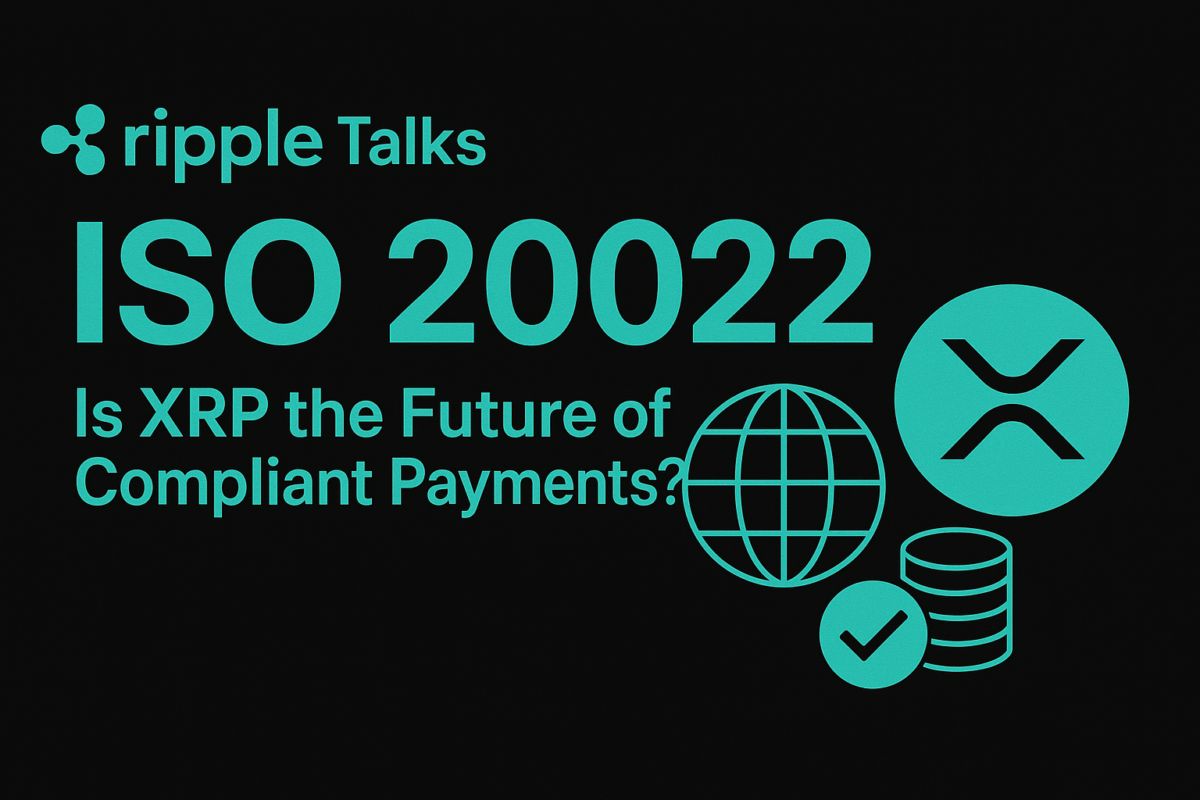Does DeSci Need a Pump? Starting from the Dilemma of the Pharmaceutical Industry
Currently, DeSci projects mainly focus on the pharmaceutical field, which is one of the low-hanging fruits for improving the most important resource for humanity—health.
Original: Decentralised.co
Compiled by: Yuliya, PANews

Science has always been the greatest catalyst for human progress. However, when the term "science" is mentioned today, it is often met with skepticism. When headlines proclaim "science shows…", it is more likely to provoke ridicule than genuine interest. This growing disillusionment is not without reason—science has increasingly become a marketing term, diluted by corporate interests, straying from its fundamental purpose of advancing human knowledge and well-being.
Decentralized Science (DeSci) as a new paradigm promises to rebuild scientific research on a more solid foundation. Currently, DeSci projects primarily focus on the pharmaceutical sector, which is one of the low-hanging fruits for improving humanity's most important resource—health.
The Funding Crisis in Scientific Innovation
The traditional scientific funding system is in shambles. Academic researchers spend up to 40% of their time writing grant applications, yet the success rate is below 20%. With federal funding decreasing, private funding has increased but is mainly concentrated in large corporations.

The pharmaceutical industry has evolved into a high-risk game that is detrimental to innovation. Consider this reality: out of every 10,000 discovered compounds, only 1 can successfully reach the market. The process is exceptionally brutal. Only 10% of drugs entering clinical trials receive FDA approval, and the entire process can take up to 15 years, with the cost of each successful drug exceeding $2.6 billion.
In the 1990s, the centralization of the pharmaceutical industry seemed like a blessing—it brought efficiency, streamlined the supply chain, and allowed for rapid scaling of drug discovery. However, this initially innovative engine has evolved into a bottleneck, with the same players hindering progress to maintain their monopoly, leading to skyrocketing costs.
Under the current model, a biotech startup needs to spend years seeking NIH funding for early discoveries, then raise $15 million in Series A funding to enter preclinical trials. If successful, it will license the intellectual property to a large pharmaceutical company, which will invest over $1 billion in clinical trials and commercialization.
This is where the incentive mechanism is distorted. Large pharmaceutical companies are no longer focused on groundbreaking new therapies but have mastered a more profitable game: patent manipulation. Their strategy is simple: when a lucrative drug patent is about to expire, they apply for dozens of secondary patents on minor modifications—new delivery methods, slightly altered formulations, or even just new uses for the same drug.
Take AbbVie’s anti-inflammatory drug Humira as an example. For years, Humira has been one of the best-selling drugs globally, with annual revenues exceeding $20 billion. Its original patent expired in 2016, but AbbVie filed over 100 additional patents to block generic competition. This legal maneuver delayed the entry of affordable alternatives into the market, costing patients and healthcare systems billions of dollars.
In a recent DeSci debate by Tarun Chitra and benjels, the issue of stagnation in pharmaceutical innovation was raised, citing Eroom's Law (the inverse of Moore's Law).

These practices reflect a larger problem: innovation is captured by profit motives. Pharmaceutical companies invest resources in fine-tuning existing drugs—making slight chemical modifications or seeking new delivery mechanisms—not because it brings significant health benefits, but because it allows them to obtain new patents and extend their profit periods.
Science on a Better Track
Meanwhile, the talented and creative global research community remains excluded from this process. Young researchers are constrained by limited funding, bureaucratic red tape, and a "publish or perish" culture that values sensationalism over meaningful research. This has resulted in a severe lack of funding for rare diseases, neglected tropical diseases, and early exploratory research.
DeSci is essentially a coordination mechanism. It brings together global human capital—biologists, chemists, researchers—enabling them to synthesize, test, and iterate without relying on traditional institutions. The funding model is also reimagined. Decentralized Autonomous Organizations (DAOs) and tokenized incentives replace government funding or corporate sponsorship, making capital acquisition more democratic.
The traditional pharmaceutical supply chain is a rigid, isolated process dominated by a few gatekeepers. It typically follows a linear path: centralized data generation, closed laboratory discoveries, high-cost trials, exclusive manufacturing, and restricted distribution. Each link is optimized for profit rather than accessibility or collaboration.
In contrast, DeSci introduces an open collaborative chain, reimagining each stage to democratize participation and accelerate innovation. This is primarily reflected in the following aspects:

1. Data and Infrastructure
Traditional Model: Data is proprietary, fragmented, and often inaccessible. Research institutions and pharmaceutical companies hoard datasets to maintain competitive advantages.
DeSci Model: Platforms aggregate and democratize access to scientific data, creating a foundation for transparent collaboration.
Example: yesnoerror uses AI to check for mathematical errors in published papers, improving the reproducibility and credibility of research.
2. Discovery and Research
Traditional Model: Discoveries occur in closed academic or corporate laboratories, constrained by funding priorities and intellectual property issues.
DeSci Model: DAOs directly fund early research, allowing scientists to explore breakthrough ideas without institutional red tape.
Example: VitaDAO has raised millions to fund longevity research, supporting projects on cellular aging and drug discovery that would otherwise struggle to secure funding. HairDAO is a collective of researchers and patients documenting experiences with different compounds for treating hair loss.
3. Market
Traditional Model: Controlled by intermediaries. Researchers rely on traditional publishers, conferences, and networks to share discoveries and access resources.
DeSci Model: Decentralized markets connect researchers with funders and tools globally.
Example: Bio Protocol provides researchers with a platform to create BioDAOs—these DAOs are dedicated to researching new compounds, providing ongoing funding for newly generated biotech assets, and offering liquidity markets for tokenized IP. Compared to the AI agent space, Bio can be seen as the Virtuals of the DeSci world.
Big Pharma acts as a counterpart to ai16z, launching investment tokens for DeSci on Daos.fun. Their AUM has exceeded $1 million, with plans to launch their own Bio agent framework.
4. Experimentation and Validation
Traditional Model: Preclinical and clinical trials are costly and typically limited to large pharmaceutical companies. Transparency is minimized, and failures are often hidden.
DeSci Model: Platforms decentralize trials, enabling global participation and funding through tokens.
Example: Pump Science utilizes bonding curves for crowdfunding longevity experiments, advancing compounds from worm tests to fruit flies and then to rat tests, ultimately leading to commercialization.
Medical researchers can submit drug research proposals on Pump Science, which helps test these drugs on worms and transmits experimental results in real-time to the platform's frontend. Users can speculate on tokens representing these drugs. Two popular tokens, Rif (Rifampicin) and URO (Urolithin A), are being tested on worms, and if they are found to extend lifespan, these compounds will enter the commercialization phase, with holders sharing in the profits.

The results of these experiments are recorded and live-streamed on Pump.science.
5. IP and Monetization
Traditional Model: Intellectual property is locked in patent monopolies, creating barriers to innovation and inflated drug prices. Applying for patents on new compounds is both costly and painfully complex.
DeSci Model: Agreements tokenize IP, allowing researchers to transparently share and monetize discoveries.
- Example: Molecule's IP framework enables researchers to fund projects by splitting IP rights into NFTs and tokens, coordinating incentives between scientists and funders. However, this model is still in its early stages. Only a few researchers have experimented with tokenizing their IP, and it remains difficult to estimate how profits will flow to holders when IP is commercialized. Additionally, to ensure adequate protection of IP, researchers may still need to register with traditional government agencies.

BioDAO has held over $33 million in tokenized IPT through the Molecule framework.
Accountability Challenges
DAOs face challenges in coordinating complex tasks and maintaining accountability—few DAOs have demonstrated sustainable success in managing long-term projects. DeSci faces an even greater challenge: it requires researchers to coordinate in addressing complex issues, meeting research deadlines, and maintaining scientific rigor without traditional institutional oversight.
Traditional science, despite its flaws, has established peer review and quality control mechanisms. DeSci must either improve these systems or develop entirely new accountability frameworks. Given the high risks involved in medical research, this challenge is particularly daunting. A failed NFT project may lose money, but a poorly executed medical trial could endanger lives.
Critics argue that DeSci is merely speculative—a transactional game. This assertion is not entirely unfounded. History shows that new technologies often struggle before achieving breakthrough success and capturing public imagination. Just as AI agents gained mainstream attention through projects like aixbt, DeSci may also need a decisive moment to shift perceptions.
The future may not unfold entirely in the direction envisioned by DeSci advocates. Perhaps it will not completely replace traditional institutions but create parallel systems that drive innovation through competition. Or maybe it will find specific niche markets—such as rare disease research—where traditional models have failed.
Imagine a world where brilliant minds are unbounded by borders or budgets, dedicated to solving humanity's greatest medical challenges—breakthroughs in Chinese laboratories can be instantly validated in Singapore and scaled in São Paulo.
Pioneers are building this future step by step. Take Bryan Johnson as an example—this independent biohacker is experimenting with off-label drug use and unconventional therapies. While his methods may alarm traditionalists, he embodies the spirit of DeSci: experimentation over gatekeeping.

Disclaimer: The content of this article solely reflects the author's opinion and does not represent the platform in any capacity. This article is not intended to serve as a reference for making investment decisions.
You may also like
Ripple Talks ISO 20022—Is XRP the Future of Compliant Payments?

PumpFun Brings Back Livestreaming Feature for 5% of Users

The Scott Lewis Story: Calm Visionary Behind DeFi Pulse

Jim Cramer Predicts Crash Like 1987’s Black Monday
Jim Cramer compares today’s market to 1987’s Black Monday, warning investors of a potential major crash.Cramer Sees History Repeating ItselfSigns of Trouble in the MarketWhat Should Investors Do?

